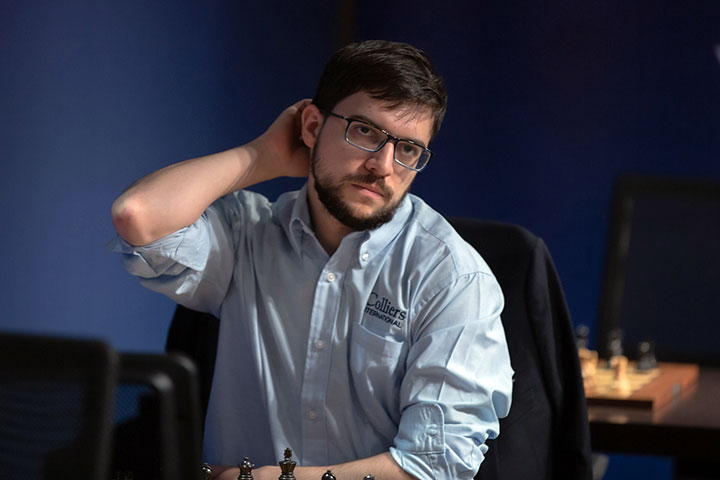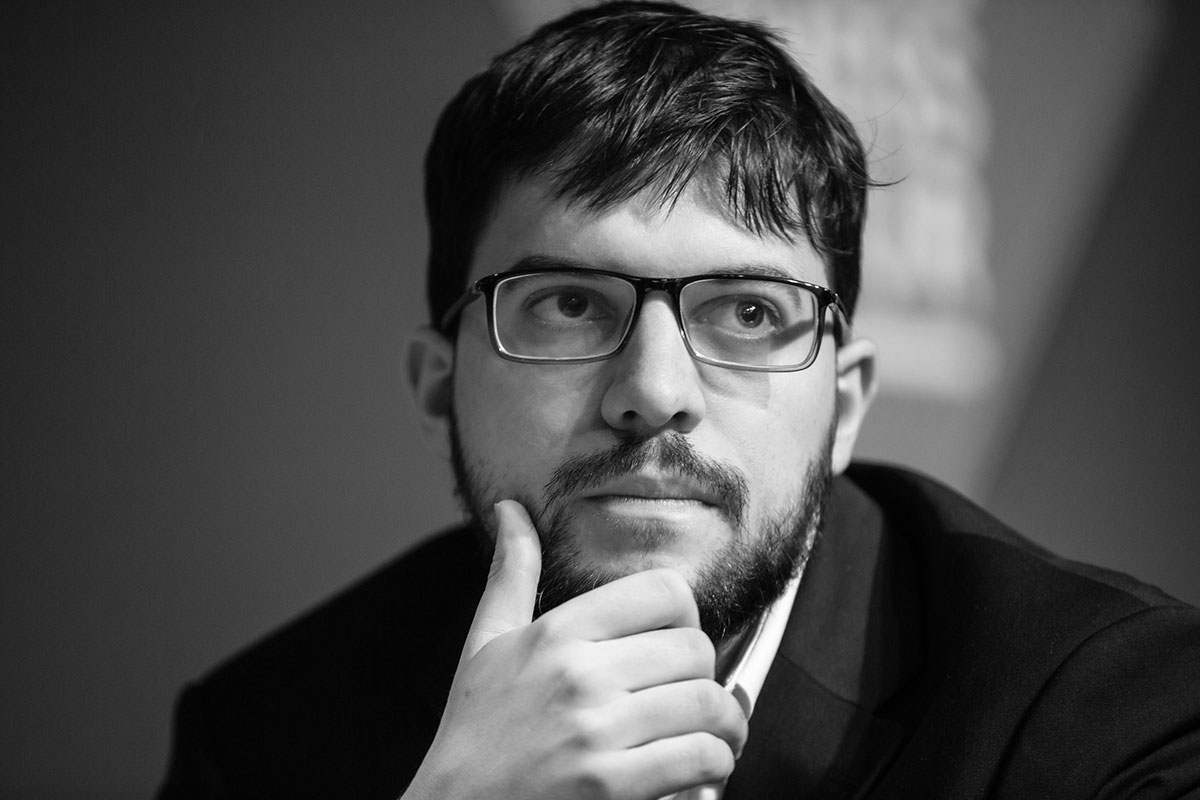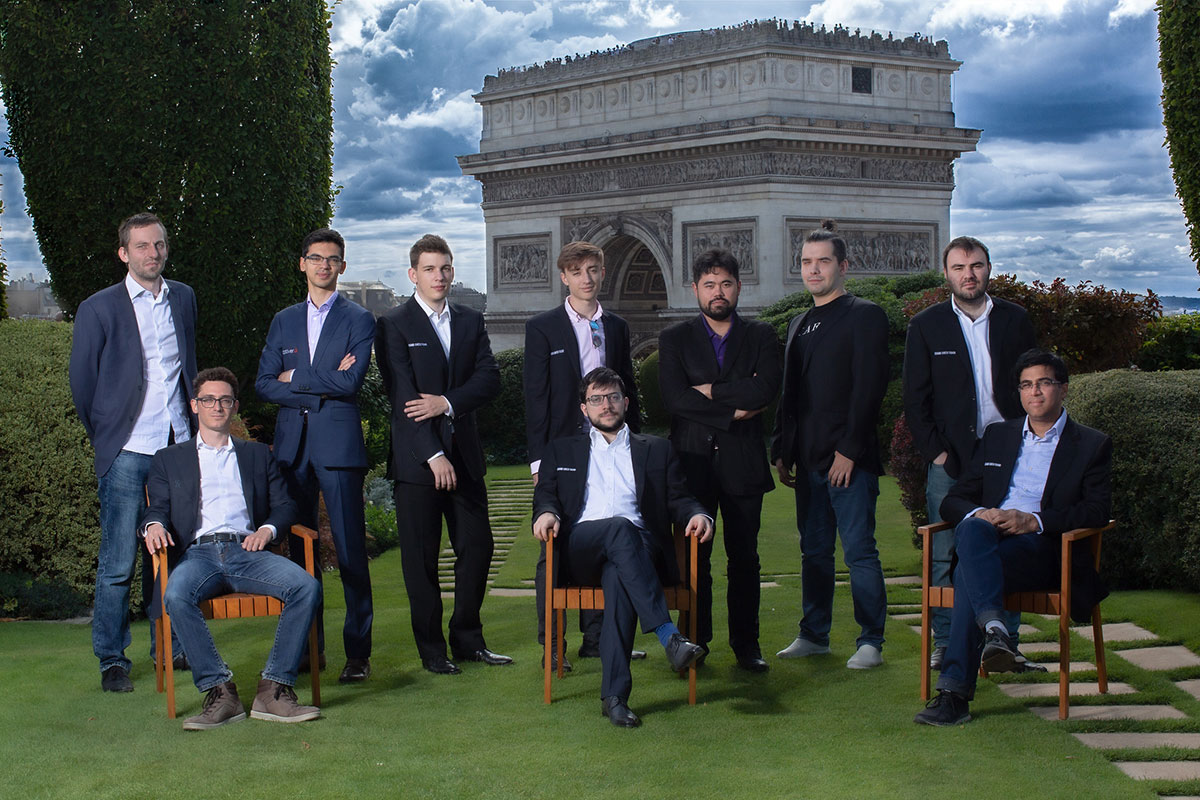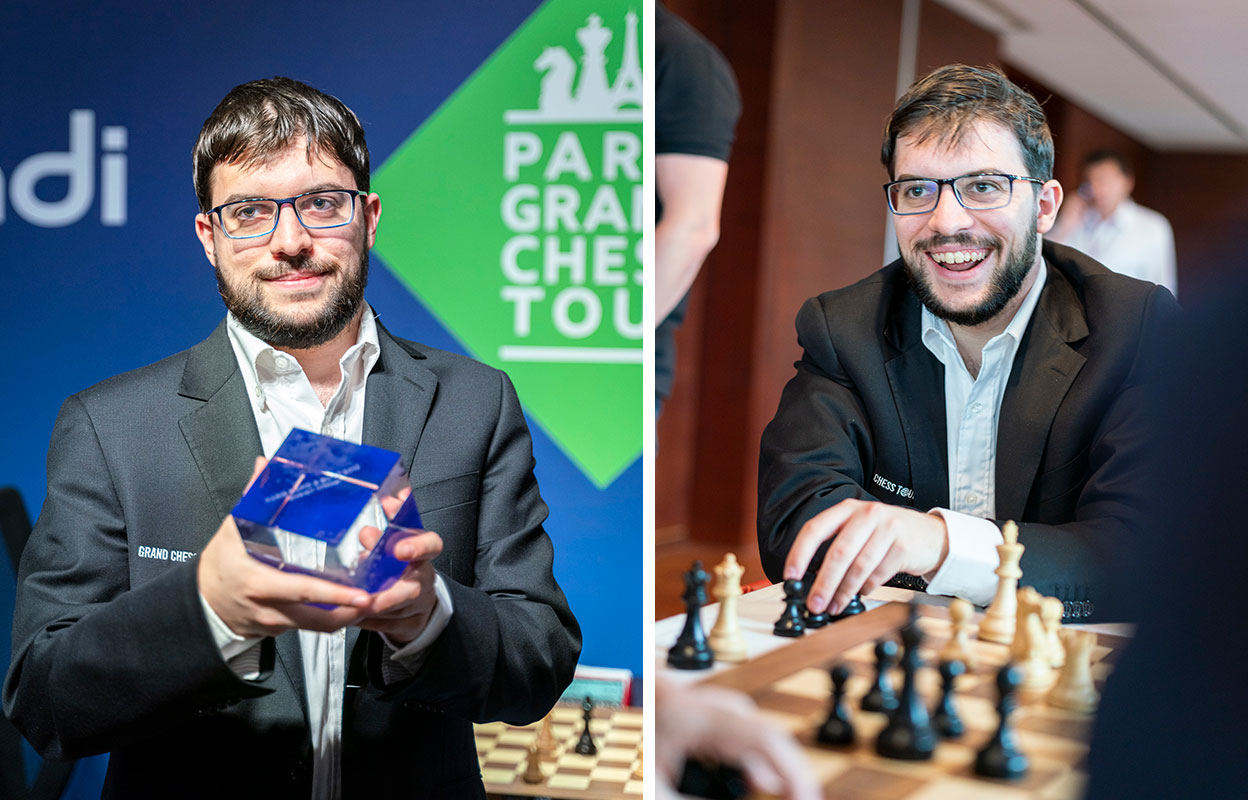


DK: You seem to have regained your winning touch. What worked for you in Riga and Paris?
MVL: I was very motivated to get back to winning ways at the Grand Prix in Riga. Everything started to click. What also helped was the importance of this tournament. The Grand Prix series is a qualification event for the Candidates. That’s not to say that I wasn’t motivated to do well in Norway or in Zagreb but in both the tournaments I started very badly. In Norway, I had one classical loss and two Armageddon losses. Clearly, it was unreasonable to have any sort of expectations from the tournament. Subconsciously, I quickly switched gears and tried to cut back my losses. It was more or less the same story in Zagreb where I cut my losses and started to think about the next events and tried to keep some energy.

Strategizing in the face of consecutive tournaments... | Photo: Justin Kellar / Grand Chess Tour
Given your excellent run in Riga, losing the final in an Armageddon game must have been quite disheartening...
I was a bit disappointed. But I was also surprised to have made it to the final. That’s because I was completely exhausted in the semifinal match against Alexander Grischuk. In the final too, I was lucky to have tied the match, by winning the second classical game. But Shakhriyar Mamedyarov deserved to win the match which turned out to be a very close affair. It was a disappointing result in the final but I still managed to get eight points.
How did you react to Veselin Topalov’s draw offer in your quarterfinal encounter in Riga after just 12 moves in what was a must-win game for him to tie the match?
I was a bit surprised but I had already achieved a very safe position. I didn’t expect him to offer a draw so early but I understand why he did so. Had I been in his position, I probably would not have done the same but I would have felt disheartened at the way the opening went. There were no realistic winning chances for black and the real issue was that the position ends up being worse (for black). I can’t criticize him for offering a draw and of course, I had no choice but to accept it.

Vachier-Lagrave ended up the centre of attention in Paris | Photo: Justin Kellar
There were just two days between the final in Riga and the start of the Grand Chess Tour in Paris. How did you manage to keep up your energy and motivation level for your home tournament?
The presence of my friends and family in Paris provided me with the extra bit of energy that I needed. I must say I was mostly lucky on the first day of the tournament. I won the game in the first round against Daniil Dubov which, after the opening, was almost lost for me. It was one of the only games in which I was out-prepared. Then I won a good game against Mamedyarov but played horrendously against Ian Nepomniachtchi in the third round. I felt lucky with my score on the opening day. Then I played much better on the following two days of the rapid event. Generally, once things start to click, they continue to spiral and you can virtually get through anything including exhaustion.
But when the blitz tournament started, things went the opposite way, starting with the loss against Grischuk. I didn’t manage to build any momentum. After the loss against Nepomniachtchi on the second day of the blitz tournament, I had a feeling that I couldn’t play chess any more but it turned out that I wasn’t the only one who managed to play poorly.

Vachier-Lagrave begins again | Photo: Lennart Ootes / Grand Chess Tour
New formats were introduced in two of the last four tournaments you played in: the Armageddon in Norway Chess and the knockouts in the Grand Prix Series. What’s your opinion about these two systems?
The Armageddon idea is fun. There’s no reason why it should not be repeated in private tournaments like Norway chess. The organizers were happy. I don’t have any complaints against this format and I didn’t mind the experience at all.
For the Grand Prix series, the knockout is a good idea. I liked the inclusion of bonus points for winning classical games. I don’t know what results it will bring at the end, which players will qualify but overall it’s quite a fair system even though you don’t get to play against the same opponents. There’s a little bit of randomness involved but then, even in round-robin tournaments, results can change depending on when you play certain opponents and with which colour.

MVL had a good time in Paris | Photos: Lennart Ootes / Grand Chess Tour
Your two recent losses (in Croatia and Riga) in classical games came on the black side of the Gruenfeld defence, which is your pet reply to d4. Will you continue to use the Gruenfeld despite these results?
Overall, the Gruenfeld defence is a very good opening. Just because I mess it up once in a while doesn’t mean it’s not safe to play. In both the games, it was possible to avoid mishaps. For instance, in the tiebreaks against Mamedyarov in Riga, I deployed the Gruenfeld again and managed to sort out my problems. I wasn’t in any danger after the opening in the rapid games. It’s a question that I may think about later on but I don’t see any issue with it. It may be less true for the Gruenfeld in the last two months but I have been consistently rewarded with wins with the other opening I play consistently with black pieces… the Najdorf. Of course, there will be some losses, but nowadays if you stay passive with the Berlin defence, you are going to suffer losses too.
Why is Gruenfeld defence an attractive opening? What advice would you give to those who want to make it a part of their repertoire?
At the time I started, the Gruenfeld was a very different opening than it is nowadays. These days there are lots of variations to memorize. In most lines, you need to know what you are doing. I keep the challenge on because now I know so much about it that I can afford to do so. But if I had to learn the opening from scratch now, I am not sure I would do it.
But this opening does give a lot of counterplay options and if your opponent wants to achieve something, he either can play a long forcing line hoping you don't remember it, with the risk of a quick draw without any chance, or he has to take some risks and allow counter-chances and a playable position. This is the good thing about Gruenfeld compared to say Queen’s Gambit where white can press for an advantage for free.